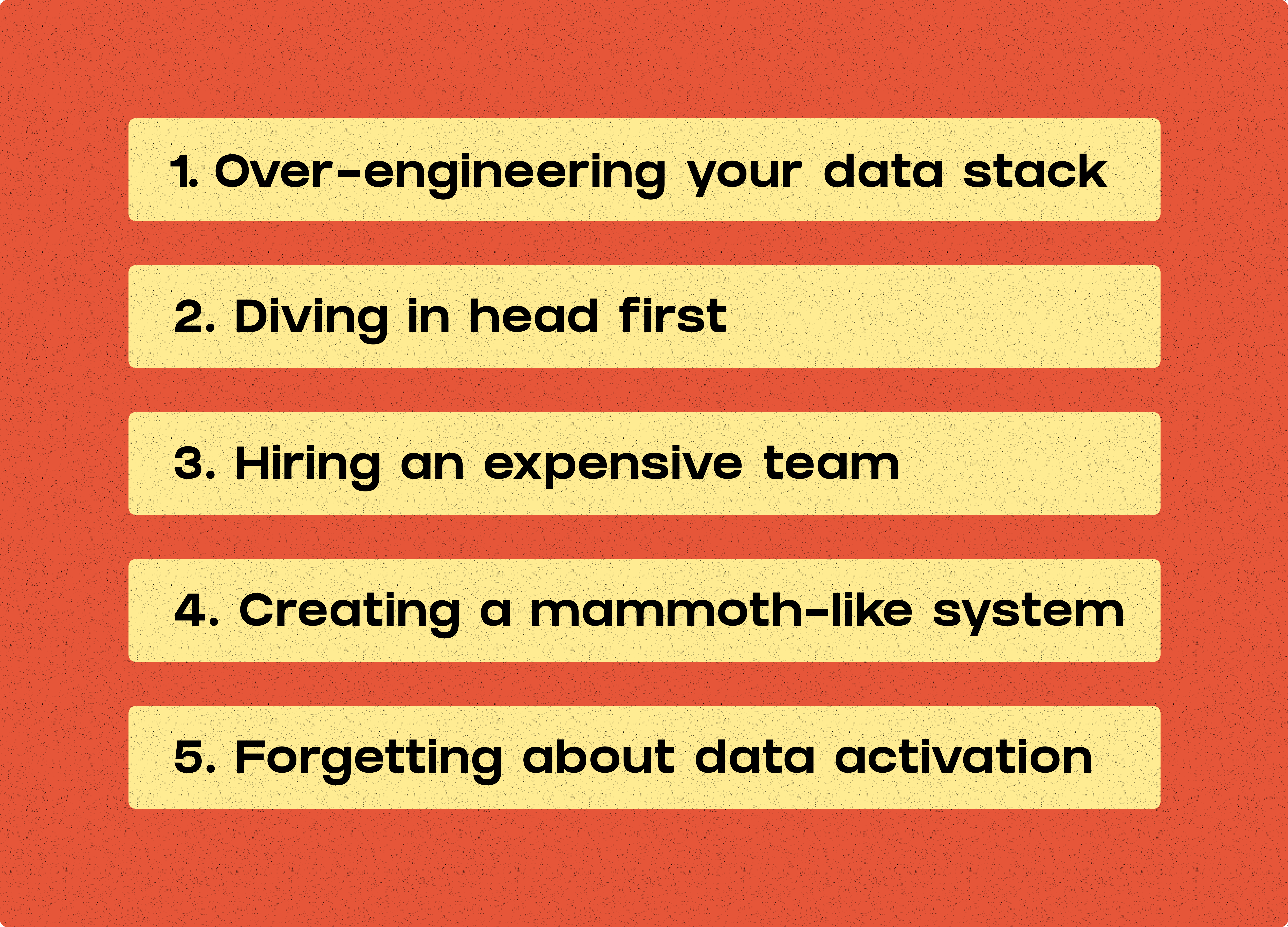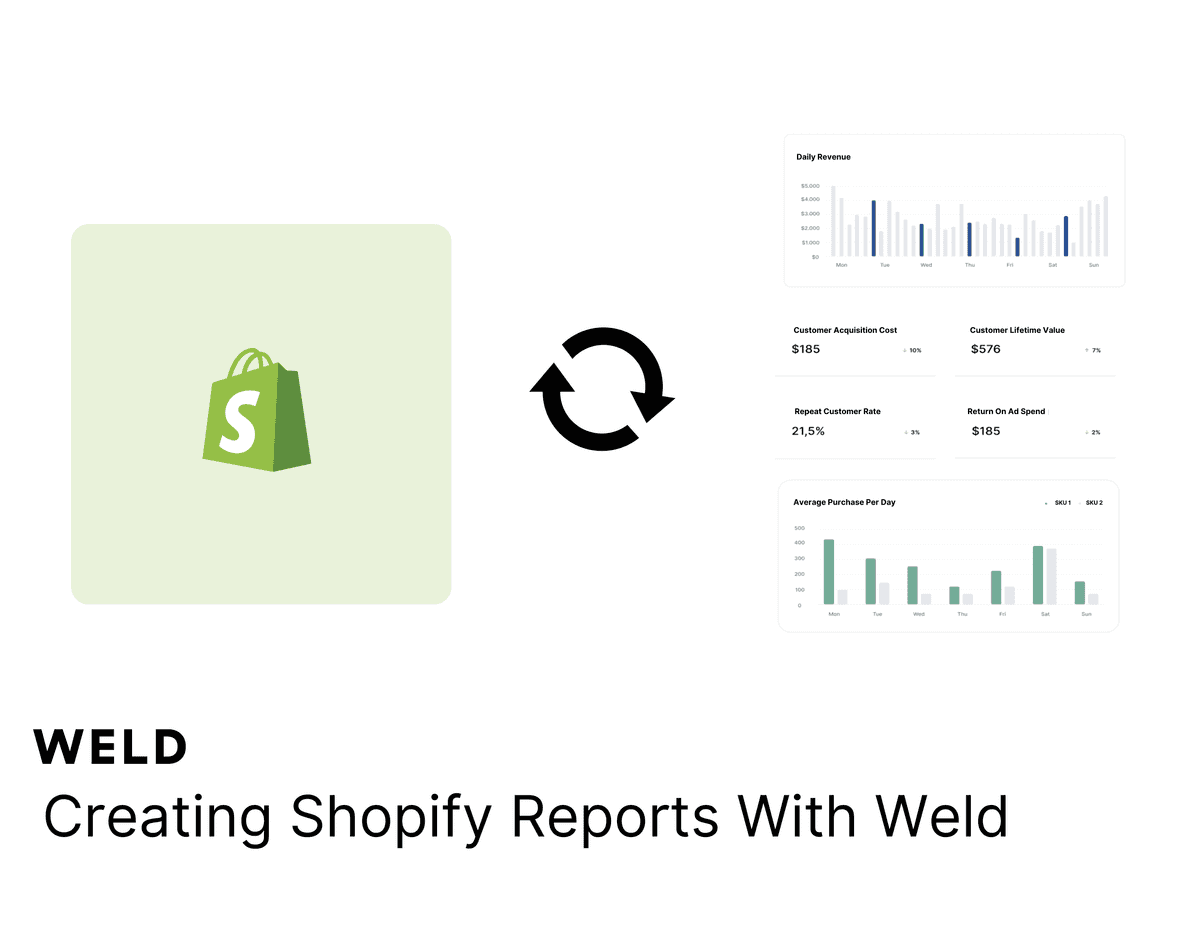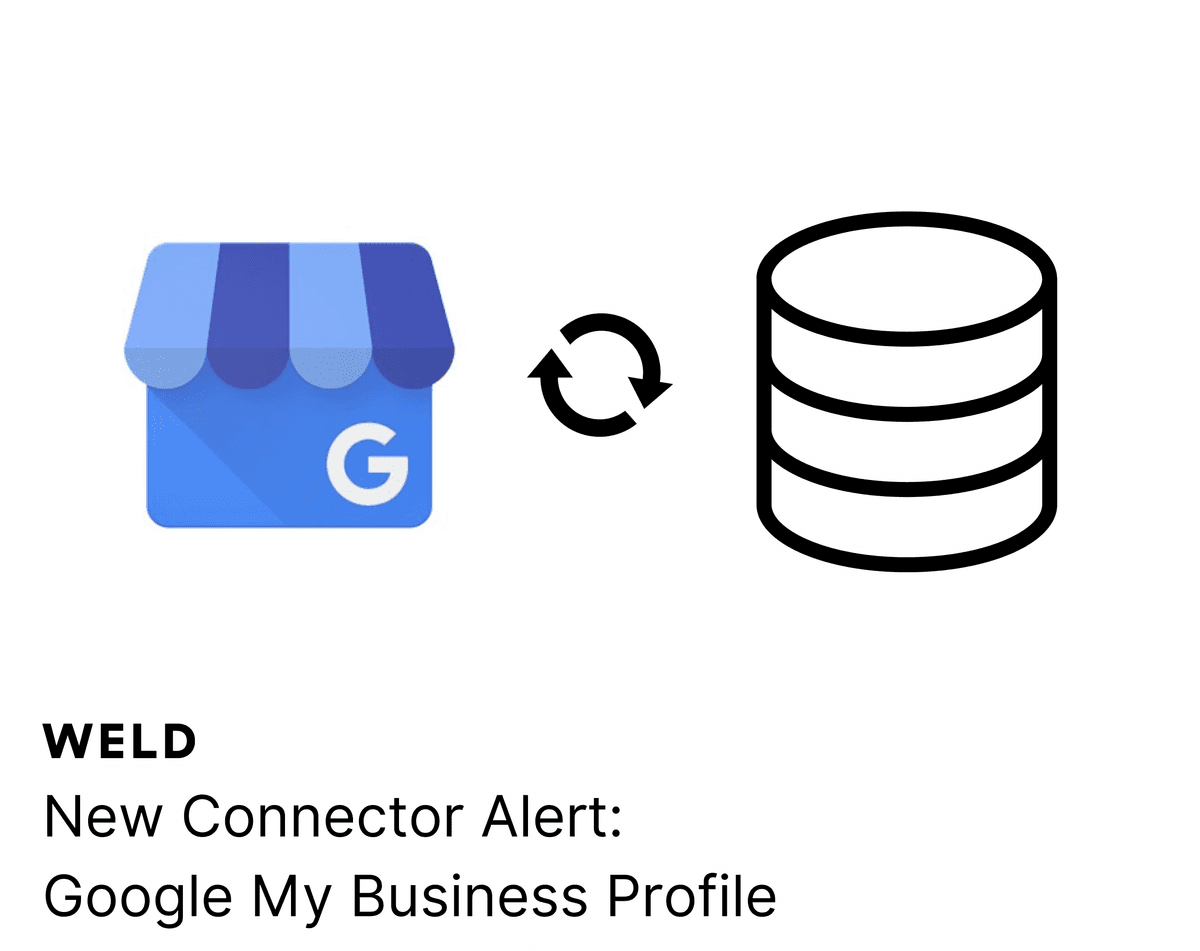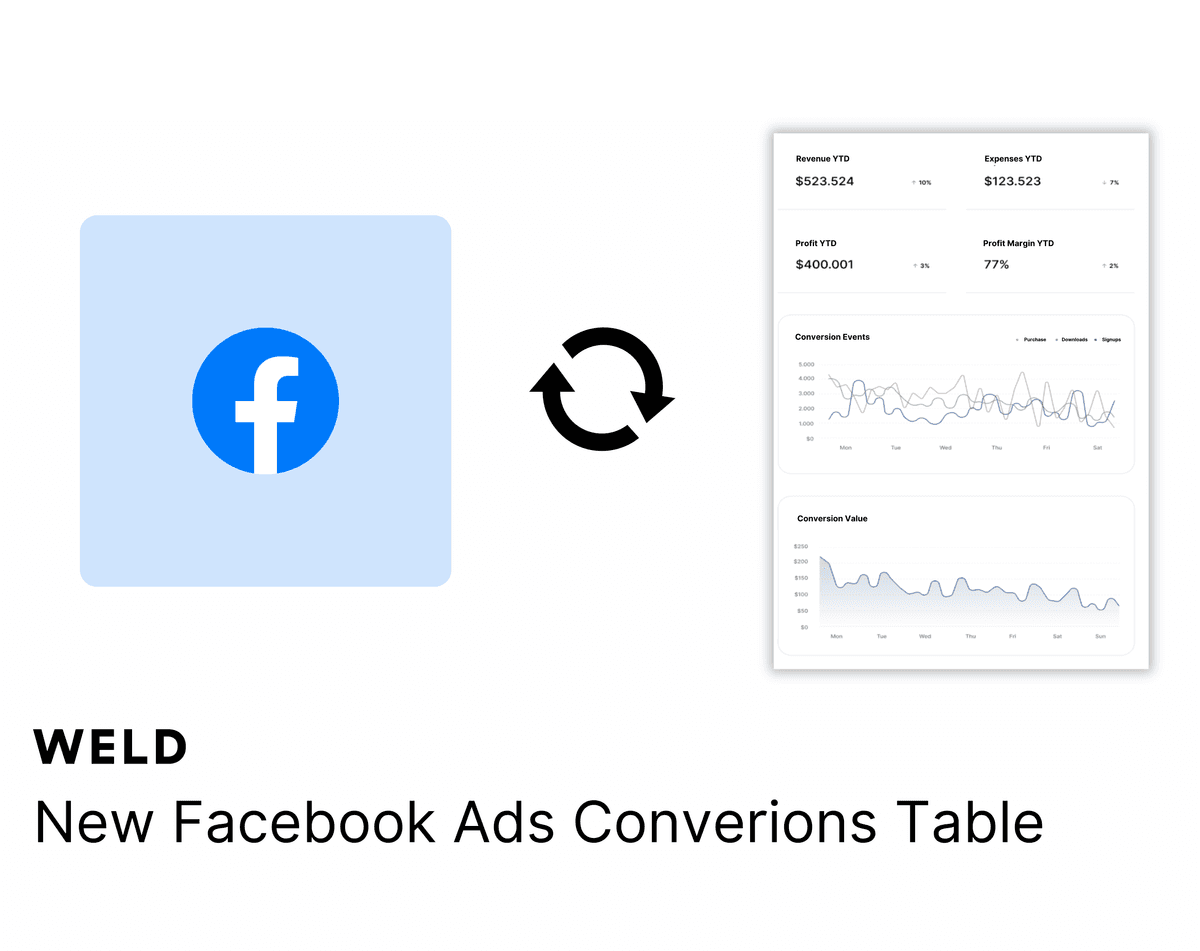
5 Common Mistakes to Avoid When Building Your First Data Stack
For the last ten years, every business of every size and industry has had it hammered into them that they need to pour their resources into collecting as much data as possible. After all, data is how to get ahead of the competition, personalize the customer experience, and more importantly, steer your business towards success (and away from disaster).
Well, you listened! And now, years later, you have more sources of data than you can effectively manage. Tens of apps, suites of legacy software, and spreadsheets litter your servers and desks. You have terabytes, if not petabytes, of data on hand - and yet, despite how valuable you’ve been told this data is, you have no way to use it.
If you find yourself in this position, then you might be considering building a data stack...
But first, what is a data stack?
A data stack is the unique combination of software, hardware, and automation you use to turn the data you’ve collected into a digestible, readable and usable format. Or, put another way, it’s the tools you use to take the raw data you collect into white papers, graphs, charts and push it back into the apps you use every day.
If you don’t turn your raw data into a more readable format and make it usable, then you don’t have a data stack.
Data stacks are incredibly important in 2021 as without them, the data you’ve collected can be a liability. Data that you can’t take advantage of is using up resources and posing a security risk. It’s an essential component of the tech side of your business.
5 common data stack mistakes to avoid
As crucial as a data stack is to your business, you don’t want to start putting one together without doing the proper research. It’s just as complicated as you imagine it to be, if not far more so. And plenty of companies fall into pitfalls no matter how tech-savvy they are.
Below are some of the most common mistakes that businesses make when creating a data stack.

1. Over-engineering your data stack
The first mistake that businesses often make when building a data stack is over-engineering it. They see a plethora of new software options and tools that seem essential to keeping everything simple and smooth.
The problem is that when too many of these tools are implemented at once, they end up being just as complicated as the data pools they’re attempting to simplify. Remember that when it comes to tech, the most streamlined and lean solution is nearly always the best.
2. Diving in headfirst
Another mistake that businesses will make is moving too quickly. This one is even easier to do because so many modern data stack solutions are built for a fast setup.
In fairness, this isn’t all bad. It wasn’t long ago that building your data stack with varying applications was a complex and time-consuming process. Now, things are much more plug-and-play.
The drawback of this speed is that it can easily lead to businesses implementing tools that they don’t need or can’t use. It’s an expensive problem to wind up in and a slow problem to get out of. Remember to take your time and do your research.
3. Hiring an expensive engineering team
Speaking of diving in headfirst, another blunder businesses make when building a data stack is spending seven figures on an engineering team before they’ve even started to build their stack.
On the surface, this decision might seem to make sense. Leave it to the experts, right?
The problem is that data stack tools have become so simple over the last few years that you probably don’t need any experts at all. Plus, it’s not uncommon for data stack solutions to supply the engineering talent for you. So, save your engineering budget until you know you need it.
4. Creating a single, mammoth-like system
Out of all of the mistakes a business can make when building a data stack, this one is arguably the worst. Rather than creating an interlocking system of modular components, a company will build a giant, all-encompassing web of software and servers.
Unfortunately, this will become more and more complicated as time goes on. Updating, debugging, and modifying a system like this results in too many dependencies.
Instead, opt for a modular system of tools and software that are plugged into one another. Then, if something needs to be modified, you can look at that piece independently. It’s agile and efficient.
5. Forgetting about data activation
Lastly, make sure you don’t forget about data activation. The last thing you want is to create an intricate system for turning your collected data into digestible data, only to have no way to actually make use of your data (as opposed to only being able to analyze it).
Data activation tools are key to making your data stack effective. They tie everything together and make the lives of you and your team far easier. Plus, it’s much smarter to implement a data activation tool early on in a project rather than trying to tack it on after. So keep it in mind right from the start!
How Weld can help
Those are just a few of the challenges you’ll face when building your data stack. Being aware of them is half the battle. The second half is knowing how to avoid them.
Fortunately, you don’t have to face these challenges on your own. Weld helps companies build and organize their data stack to maximize their success. We keep things simple and sophisticated. Here’s how Weld can help:
An all-in-one tool
First, Weld is an all-in-one tool. There’s no need to plug a variety of software into your data stack. Our platform allows companies to sync data in their data warehouse (referred to as ELT for Extract, Transform and Load), and out again into their most-used business apps like their CRM or Helpdesk. This allows companies to always keep a pulse on their customers by knowing exactly what their status is at all times, with fresh data, without having to sift through dozens of tabs every day. We handle everything so that you can put together a seamless solution without any unnecessary (and expensive) fluff.
Define your use cases
Second, we know that not every solution is right for every business - and that includes Weld. That’s why we evaluate your needs and use cases before we start building your data stack and set you up with Weld. This way, we can make sure that our service is best for your business. And if it isn’t, we’ll let you know!
Data-team-as-a-service
Lastly, Weld supplies the experts. You don’t need to hire a team of engineers to build your data stack because we’ve already hired them for you. Our services allow you to hire the top 1% of data analysts and engineers, 20x faster than average, at 1/10th of the cost. It’s talent-as-a-service, making it as affordable as it is effective.
Reach out to the team at Weld today and see how we can help you!
Continue reading

How to set up your Shopify metrics in Weld
Learn how to set up your Shopify metrics in Weld and get actionable insights from your data.

New Connector Alert - Google My Business Profile
Looking to optimize your Google My Business Profile reporting? With our new ETL connector, you can effortlessly integrate your Google My Business Profile data with all your other data sources. Create a comprehensive view of your business metrics, enhance your analytics, and make more informed decisions with ease!

New Facebook Ads Conversion Table
Analysing your Facebook Ads conversion data has now got easier with our new conversion insights table.





